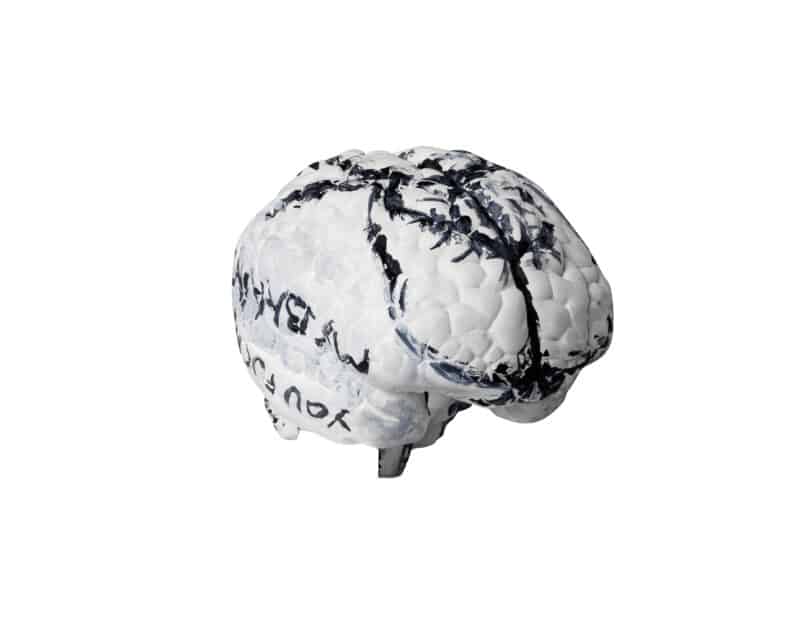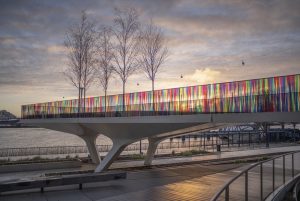Conrad Shawcross has been commissioned to create a major new architectural intervention for the Greenwich Peninsula. The Optic Cloak will be visible from Summer 2016 as part of the Peninsula’s new low carbon Energy Centre, and has been designed in collaboration with the architectural practice CF Møller Architects. The Energy Centre will be completed in Autumn 2016.
Drawing on sources as diverse as maritime camouflage, Cubism and Op Art, Shawcross’ optical cloak system is his most ambitious public commission to date, uniting sophisticated engineering and complex optical research. The monumental structure – 49 metres high by 20 metres wide and 3 metres deep – is constructed from aluminium cladding with perforated panels. These triangular panels fold across the surface of the tower forming intricate geometric patterns that visually break up the flat planes to create an uneven sculpted surface. A key aspect of the design is the creation of the Moiré Effect, the first time Shawcross has ever used this optical phenomenon in his work. The effect is created by overlaying the perforations on each panel at different angles to each other, resulting in a dynamic and beguiling surface which appears to change continually.
As Shawcross explains,
“I wanted to create a response that celebrates the commission’s function as part of the Energy Centre’s flue, rather than trying to hide it. I started to research the history of camouflage as I was intrigued by its seemingly paradoxical nature – often it makes the object or animal it’s disguising more visually arresting. I was particularly interested in a type of Maritime Camouflage called ‘Dazzle Camo’ which was used on ships during the First World War, as well as in Cubism and Op Art. The idea is to break up the surface of the object, creating false perspectives and vanishing points. I thought it was important to give the commission a dynamic quality. For those passing, it will evolve radically as you pan by and under it.
Another key issue I have remained very conscious of, and have used as a driver for the idea, is the fact that this a low carbon Energy Centre for the Peninsula and so the lightness and efficiency of the structure and form has been at the core of my thinking and the development of the design.”
In March 2016 Shawcross will also unveil Paradigm, his commission for the new Francis Crick Institute building at their site in King’s Cross, London.
About The Artist
Conrad Shawcross explores subjects that lie on the borders of geometry and philosophy, physics and metaphysics. Attracted by failed quests for knowledge in the past, he often appropriates redundant theories and methodologies to create ambitious structural and mechanical montages.
Shawcross was born in 1977 in London, where he currently resides and works. The artist, who was elected as a Royal Academician in 2013, has recently had solo presentations at ARTMIA Foundation, Beijing (2014); the Roundhouse, London (2013); Palais de Tokyo, Paris (2013); MUDAM, Luxembourg (2012); Science Museum, London (2011 – 2012); Turner Contemporary, Margate (2011); and Oxford Science Park (2010).
In 2015 Shawcross presented his monumental sculptures The Dappled Light of the Sun in the Royal Academy’s Annenberg Courtyard and Three Perpetual Chords in Dulwich Park, as well as participating in the group exhibition Beyond Limits: The Landscape of British Sculpture 1950-2015 at Chatsworth.








